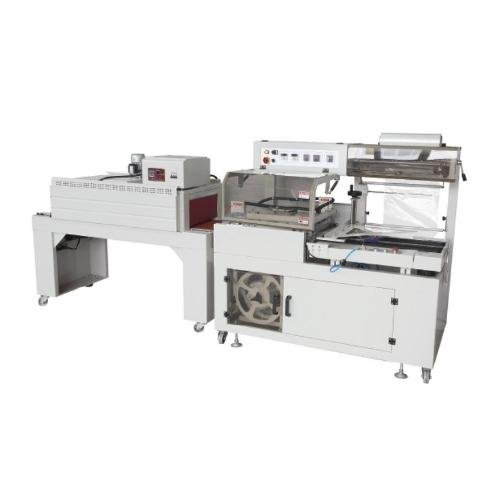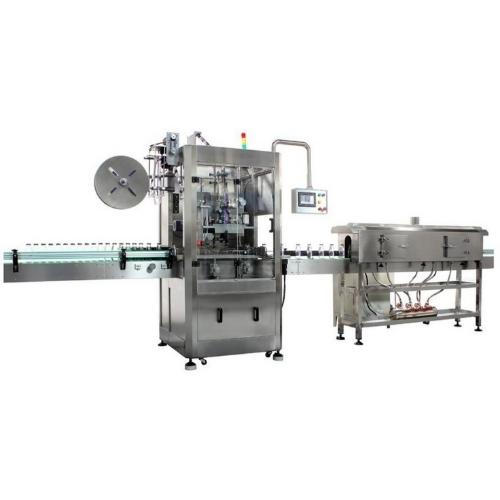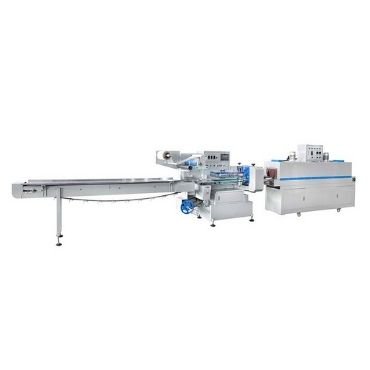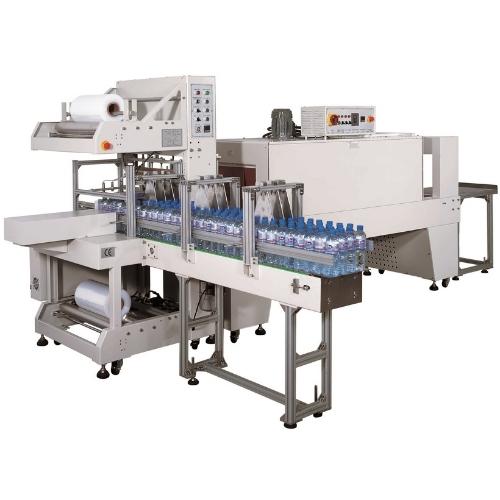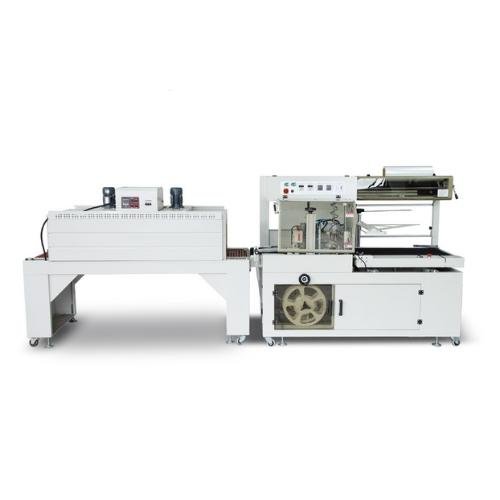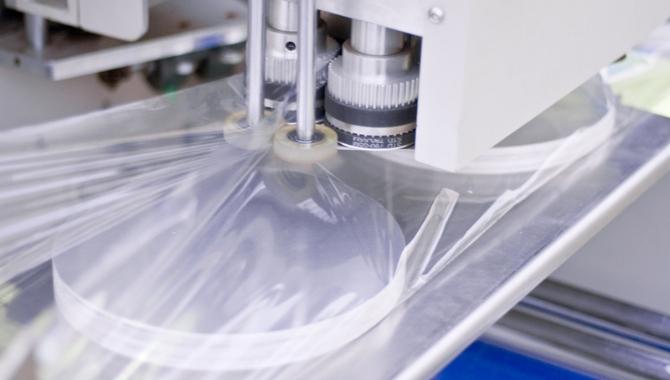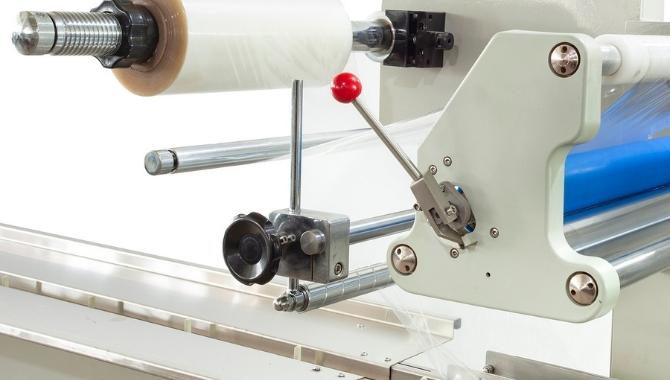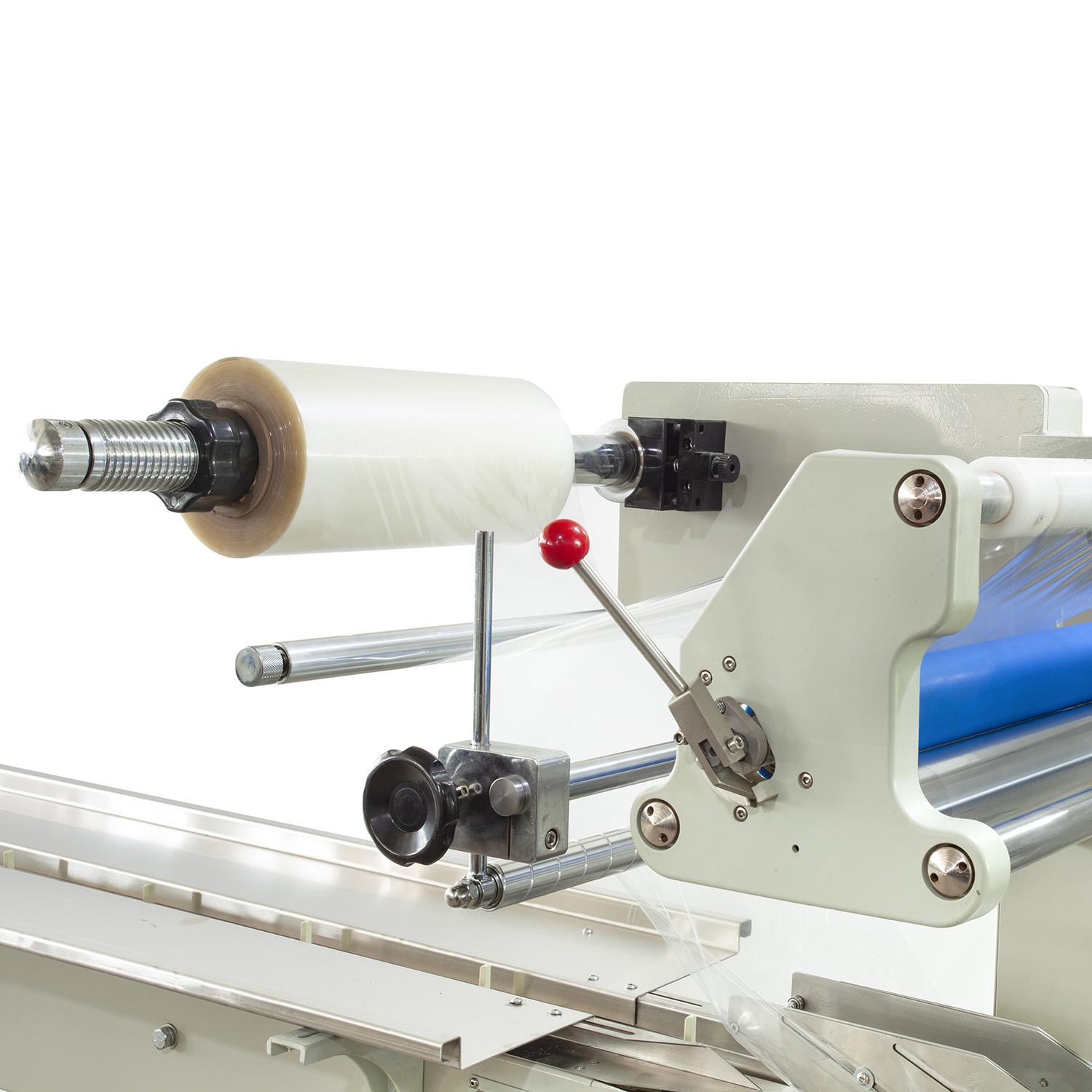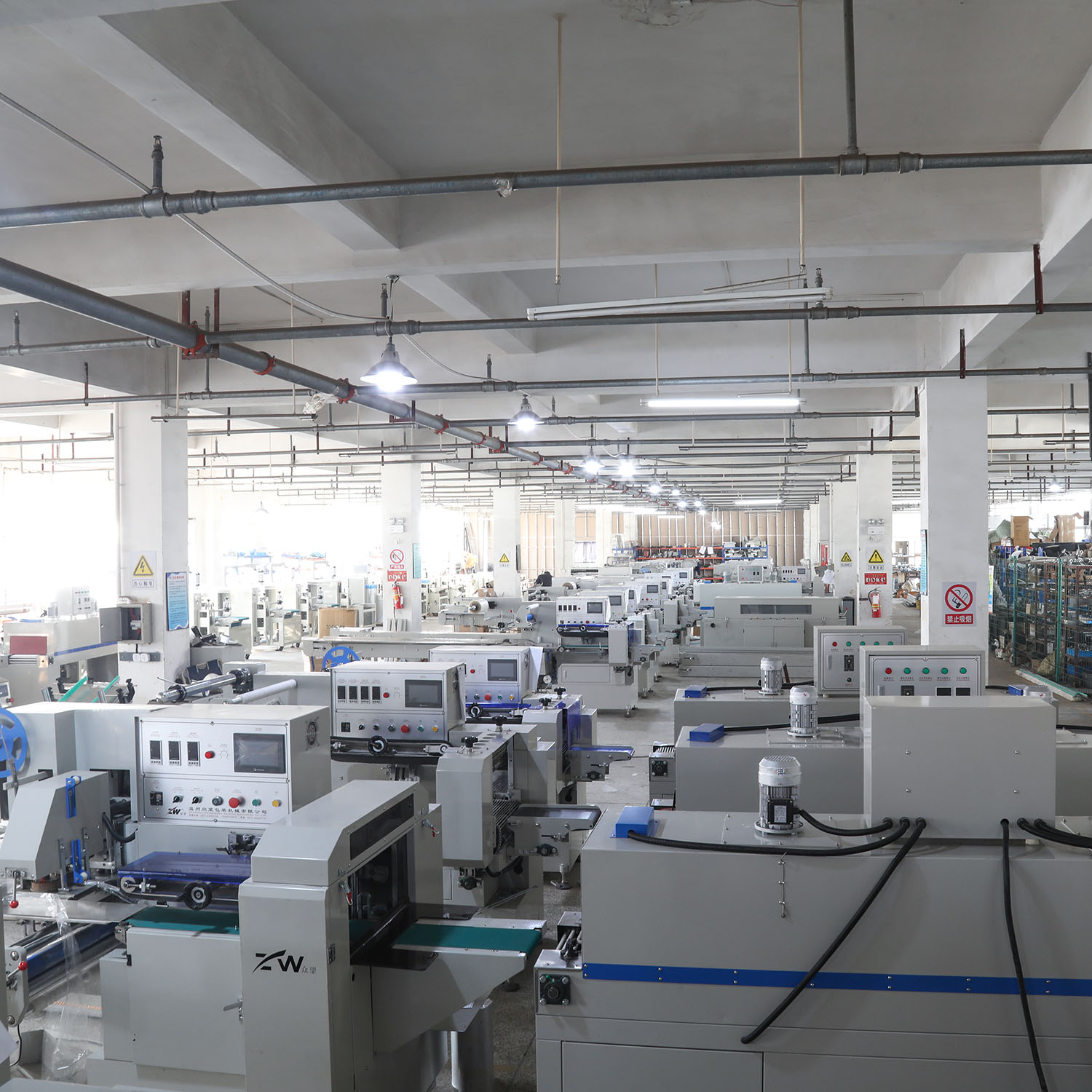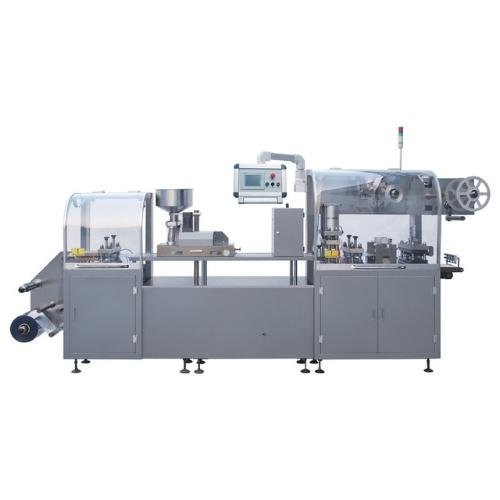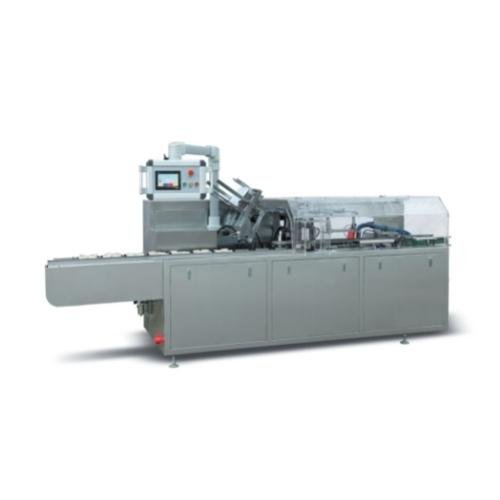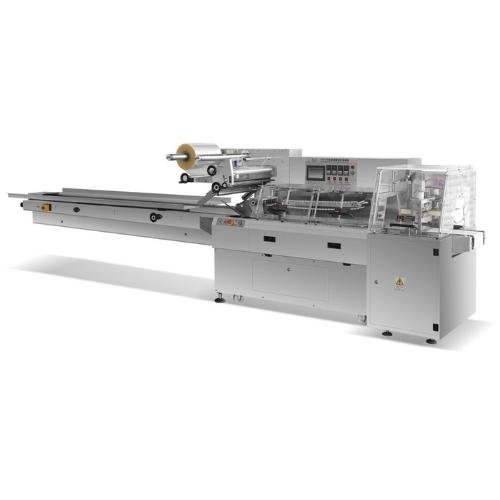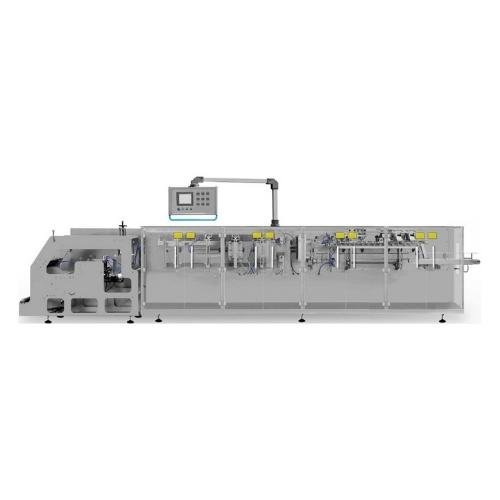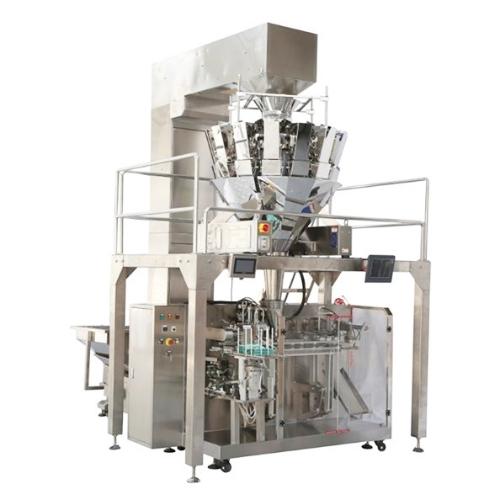Custom Shrink Wrap Machine Supplier in China
JOCHAMP manufactures a shrink wrap machine that is perfect for the industrial packaging of non-food and food products. We can customize each machine upon request.
- Offers perfect shrinkage
- Offers high efficiency and accuracy for packaging
- Provides firm sealing
- Offers a one-stop solution for your shrink wrap needs
Customized Shrink Wrap Machine Solution for Your Business
JOCHAMP offers a one-stop shrink wrap machine solution in a complete range of sizes. Among our machines are entirely and semi automatic shrink wrap machines. We manufacture these machines with advanced features such as shrink delay, high-speed sealing time, adjustable temperature, magnetic hold down, and more.
It can use a wide range of shrink films such as PVC, PP, polyethylene, Polyolefin, and more. It comes with a compact structure to fit tight spaces. We designed shrink wrapping machines that can be easily installed in your production area. JOCHAMP also has engineers to customize shrink wrap machines according to your needs.
Please send us your inquiries today!
Why Choose JOCHAMP Shrink Wrap Machine

We can manufacture shrink wrap machines according to your specifications and requirements. JOCHAMP has a qualified R&D team to provide you with customized solutions.

Here in JOCHAMP, we implement up to 36 quality control processes for shrink wrap machine production. We are equipped with complete testing and raw material inspection.

All our shrink wrap machines are manufactured in adherence to different international quality standards such as cGMP, ISO9001, SGS, CE, and more to ensure quality.

JOCHAMP can provide you with excellent after-sales services, warranty, quick-wear parts, and more services upon your purchase of shrink wrap machines from us.
How Does a Shrink Wrap Machine Work?
Shrink wrapping machines functions by applying the shrink wrap with heat through its integration with heat source and sealers. This machine works by closing the shrink film’s open ends. The shrink film shrinks down to the product by applying heat.
Heat guns are also used as the heat source for the low output operation of shrink wrap machines. If you are looking for a shrink wrap machine for your business, don’t hesitate to choose JOCHAMP as your supplier. We offer to shrink wrap machines available in different sizes and types. Low to medium operations and fully automated machines are available.
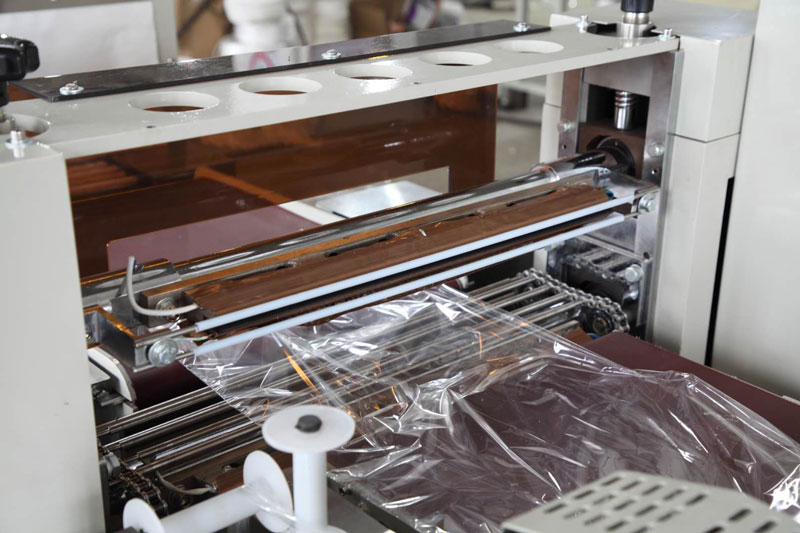

Different Types of Shrink Wrap Machine Sealers
L-Bar Sealers. These sealers are used for efficient and simple sealing of centerfold shrink film. It is mostly used for manual shrink wrap machines.
I-Bar Sealers. These are primarily used for shrink tubing and shrink bags. It is equipped with all necessary accessories for shrink-wrapping different products.
Foot Sealers. Foot sealers are used for wrapping shrink polybags at a very fast speed.
Features of Our Shrink Wrap Machines
JOCHAMP manufactures shrink wrap machines that are equipped with optimal features such as the following:
- Welded heavy-duty construction
- Speed modulation programming
- Tool-free changeover
- Repeatability and high-speed accuracy
- High-speed performance
- Smooth operation
- Low height film rack
- Offers maximum control and precision
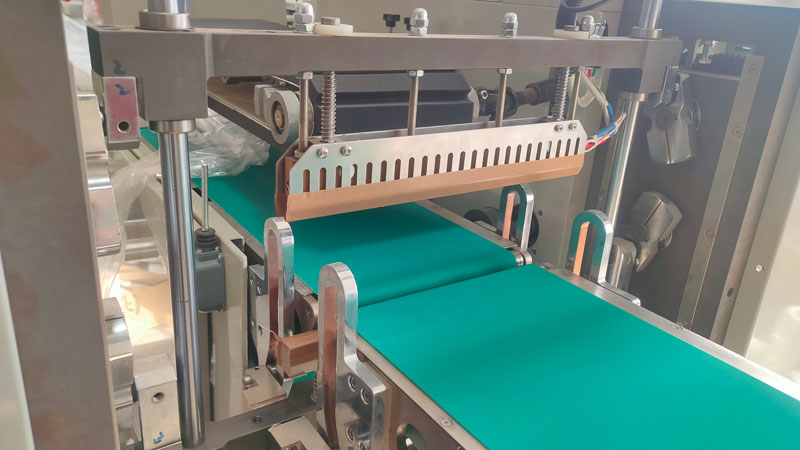
Your Trusted Shrink Wrap Machine Manufacturer in China
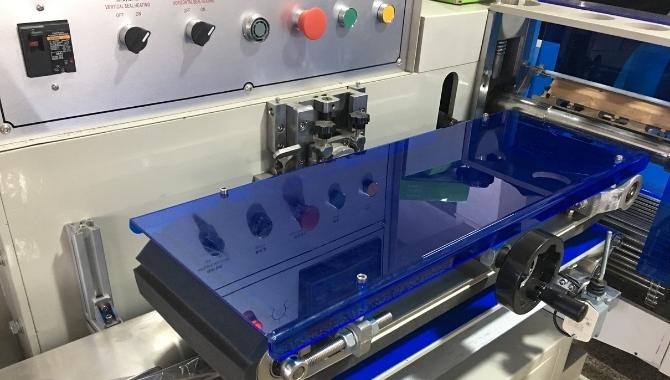
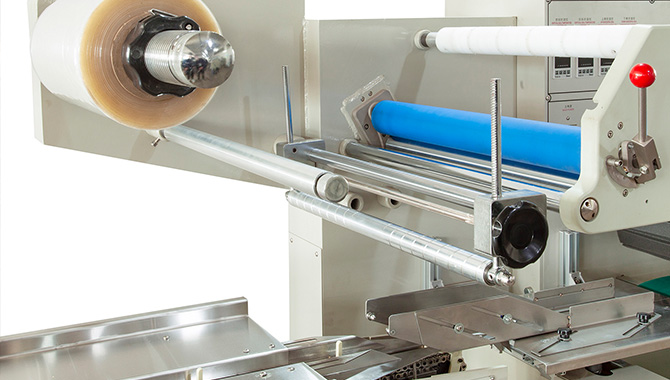
JOCHAMP offers a wide range of shrink wrap machines that are ideal for packaging full pallet loads or small items. It comes with different components such as unrolling device, hot air blower, safety stand, and more. These machines are suitable for different film options such as polyolefin, polyethylene, and more in a variety of thicknesses.
Here in JOCHAMP, we can design a shrink wrap machine according to your specific details. Fully automated machines are also available for heavy-duty applications. JOCHAMP is a trusted manufacturer for more than 12 years. All our machines are certified by international standards such as SGS, cGMP, ISO9001, CE, and more.
Please send us your inquiries today!
If you purchase a shrink wrap machine at JOCHAMP, we can provide you with the following options:
- Rotary top seal
- Customized infeed for different applications
- Roll film centerfold (single or dual)
- Powered product bypass
All our shrink wrap machines are suitable for a wide range of films such as:
- Flat or centerfold films
- Polyolefin (45-90 gauge)
- Low-density polyethylene (1-3 mil)
Different Types of Shrink Wrap Machine Tunnel
It is the most common shrinking device used in a shrink wrap machine.
- Filming the product uses hot air
- Easy to use and reliable
- Offers wide range settings of for temperature
This tunnel used in a shrink wrap machine offers advantageous features such as:
- Controllable heating
- Uniform heating
- Can be used for shrink-wrapping products with different shapes
It is a shrink wrap tunnel that utilizes heat through heat bulbs.
- Consistent and fast results
- Offers uniform heat level
- It also provides low noise operations
Related Products
Shrink Wrap Machine: The Ultimate Guide
In this guide, you will find all information about shrink wrap machine. Whether you want to learn about design, features, specification, types or working principle – everything you are looking for is right here.
This is a machine that uses heat applied to a thin plastic film wrapped around a product to shrink it and package the product.
The item is covered by the plastic film and then passed through an oven or heat tunnel to shrink.
They can wrap various products such as blister packs, pallets and tubes, cups or trays and a variety of other products.
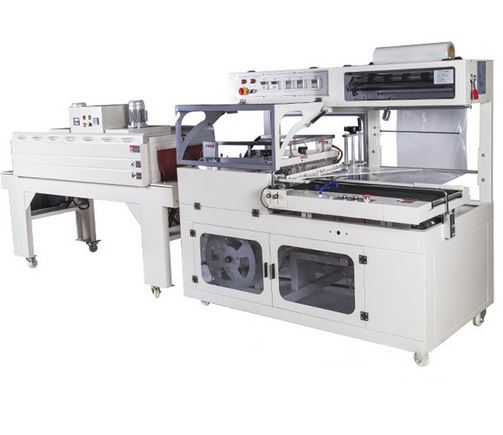
shrink wrap machine
The Shrink Wrap Machines come in a wide range of specialized designs for different industrial applications.
Shrink Wrap machine has many applications in a wide spectrum of industries with new segment applications coming up every day. Some of these applications include:
Wrapping Packaged Foods
A rapidly growing trend in the current food industry is the method of multi-packing food sold at wholesale stores.
Shrink Wrap gives them an edge like prolonged shelf life, tamper proof and an improved visual appeal.
Since they can withstand extreme temperatures and toxic conditions, they are used to wrap frozen foods and other refrigerated products like ice cream.
Wrapping Printed Materials
This is the largest market segment in Shrink Wrapping and was initially dominated by the use of PVC films.
The inclusion of polyolefin with low shrink force has greatly reduced the dominance of PVC in this market.
This segment includes shrink wrapping ranging from large form stationery producers to small scale shop printers.
Wrapping Pharmaceutical Packages
The Pharmaceutical market has tremendously grown impelled by the need to have tamper-proof packages.
Shrink Wraps can also reduce the overall product cost by multi-packing it compared to other packaging options like PVC shrink bands.
Wrapping Sporting Goods, Games And Toys
Shrink Wrapping these products enhances their integrity and gives them an appealing visual effect to the customer.
Plastic model toys various types of sport equipment, puzzles and games all profit from the shrink wrap film security.
Wrapping Houseware And Hardware
Shrink Wrapping is applied to a very wide variety of home appliances and hardware parts and tools. They range from plastic bowls, cutlery sets and assorted tools which are shrink wrapped instead of the conventional blister and corrugated packaging.
Wrapping CD’s And Video Tapes
These two products are packaged using some kind of film overwrap with video tapes primarily shrink wrapped.
Though CD’s normally use tuck and fold as a non-shrink process, more producers are resorting to shrink wraps as their equipment is being updated.
The operations of a Shrink Wrap Machine are majorly based on loosely wrapping a plastic film on a product or a number of products as one.
The product is then conveyed to a heating tunnel where the wrap is heated and shrinks to tightly fit the product creating a protective barrier.
This is the basic principle of operation but the mode of operation varies depending on the type of Shrink Wrap Machine.
They may be manual, semi-automatic and fully automatic with different working mechanisms.
Shrink Wrap Machines are available in a wide range of types depending on the packaging operations they are required to carry out. They include:
Single Reel Shrink Wrap Machine
It involves the use of a single reel that is that is placed around a product overlapping underneath after it has been stretched and cut to fit.
Technically, the film is fed on the conveyor with the product placed on the film then folded, sealed then heat applied to shrink it.
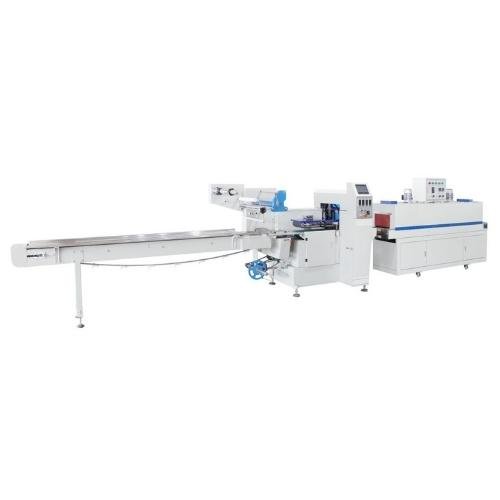
single reel shrink wrap machine
This type of Shrink Wrap Machine is mostly applicable in for wrapping multipacks which mostly require a printed film.
They are very precise when positioning the printed area of the eventual product being wrapped.
Double Reel Shrink Wrap Machine
In this type of Shrink Wrap Machine, two rolls of film are used simultaneously giving a strongly wrapped product.
They are mostly used to wrap very large products such as doors, pallets and multipacks of huge products.
The products can be wrapped much faster than the single reel machine with stronger film wraps produced.
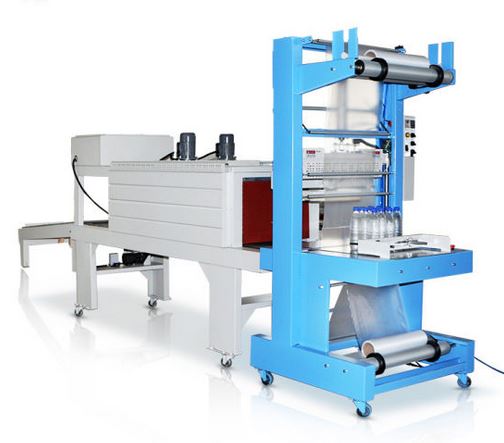
double reel shrink wrap machine
They are recommended low to medium product output with packaging requests that are straightforward.
Side Seal Shrink Wrap Machine
The Side Seal Shrink Wrap Machine extremely versatile enough to wrap products of literally any length.
The reel feeds the shrink wrap film around the product with a loose tube formed around the product length.
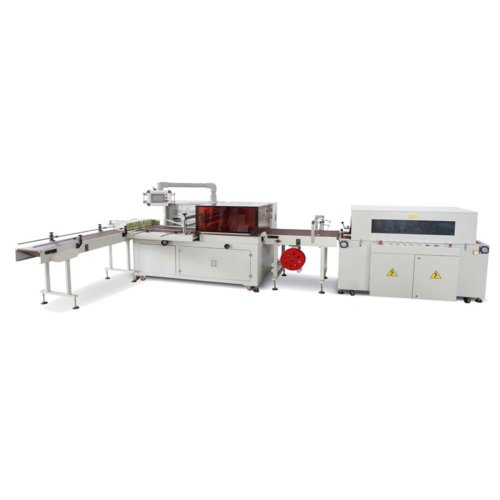
side seal shrink wrap machine
The products are then sealed and separated by cutting and the conveyor used to forward them to the heating tunnel.
Heat is then used to tightly shrink the wrap around the product.
L-sealer Shrink Wrap Machine
This wrap machines contain dual sealing bars that have been positioned in a backward L shape.
A pocket is formed on the crease created by the shrink film when it is folded along the sealing bars and products placed.
After placing the products on the crease, the shrink film is sealed on the remaining three sides.
The products are then conveyed to the heating tunnel where the film is heated to produce a tight fit around the product.
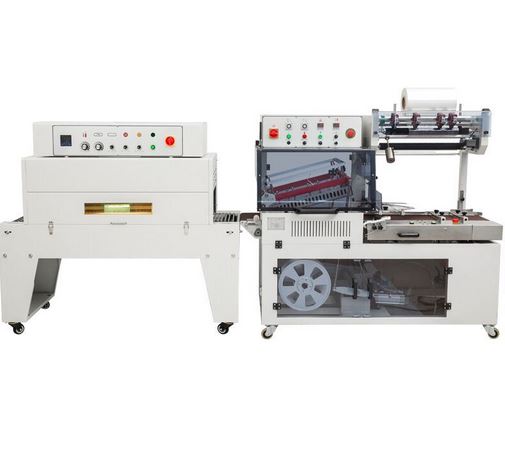
L sealer shrink wrap machine
A Shrink Wrap Machine has the following components:
- Aluminum Hot Sealing Jaws: they use heat to apply pressure on wrapping films to separate products after wrapping.
- Machine Engine: mainly composed of motors powered from a mains source of electricity.
- Conveyor System: has a conveyor belt with rollers and powered by a motor to convey products in the wrapping process.
- Heating Tunnel System: contains heating devices placed over conveyers and can be either hot air, steam or infra-red shrink tunnels.
- Thermostat: used to regulate the heating temperature when shrink wrapping the product.
- Cooling Fan: heat is generated when sealing and the fan is used to cool down the machine and product after sealing.
A Manual Shrink Wrap Machine requires a dispenser for the film, a heat gun that is manually operated and a sealing bar.
The reel feeds the film onto a level surface and the product positioned on the film with a loosely placed fold of film over it.
A heated sealing bar is used to seal the film seals and a manual heat gun shrinks the film on the product surface by passing over it.
Operational costs are significantly low with a Manual Shrink Wrap Machine but with limited output.
In a Semi-Automatic Shrink Wrap Machine, the dispensing reel machine-feeds the film into a platform.
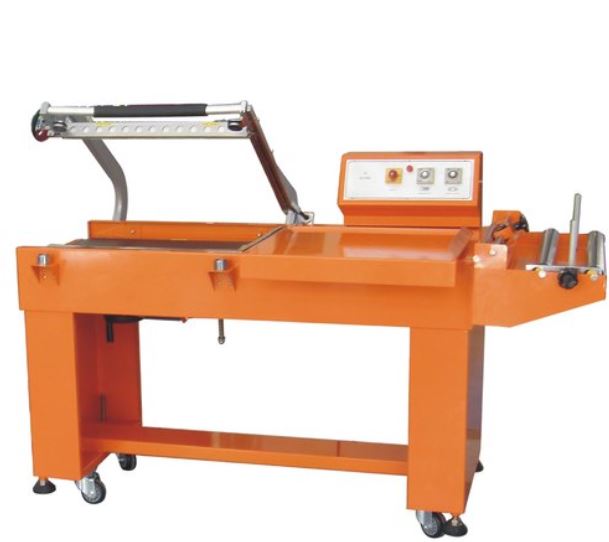
semi automatic shrink wrap machine
The product is then positioned on the film surface which is folded loosely on the product after being cut to size.
An airtight seal is made using a sealer and the product taken to the heat using rollers or conveyer belts tunnel to shrink the wrap.
The products are then moved to a receiving surface from the heat tunnel using the same conveyers
Recyclable Shrink Wrap
Recyclable Shrink Wraps are generally manufactured from polyethylene that has a very low density (LDPE).
Facilities have been set up in most cities to accept consumer waste composed of LDPE with others also accepting polyolefin shrink wraps.
Nevertheless, it is not possible to recycle shrink wraps that have been used on sanitation products or healthcare products.
This will also include shrink wraps used around hazardous waste as containers and those contaminated with organic waste.
Compostable Shrink Wrap
These are shrink wraps that have been engineered to decay in composting systems found at home or in industrial set ups.
Such composting systems must have conditions like high levels of humidity, raised temperatures
and high levels of oxygen.
Such necessities require that the shrink wrap recycling stream be separated from the recycling stream of other compostable plastics.
The Shrink Wrap Machine part responsible for cutting and sealing the wrap film on a product after heating is called the sealer.
The various forms are the floor standing sealer, an I/L table-top sealer or a sealing wand that is hand-held.
The two major types of Shrink Wrap Machine sealers are the I and L sealers which offer different merits when used. They vary as follows:
I-Bar Heat Sealer
This type of Shrink Wrap sealer is commonly used in systems that operate manually during the wrap shrinking process.
The name originates from the heating bar/element shape that resembles the letter “I”.
This kind of Shrink Wrap Sealer is recommended for sealing products that are small or medium-sized.
Since the machines they are used in are manual, they are typically hand-operated by lowering it when sealing the film.
L-Bar Sealer
The application of this type of wrap sealer is mostly in the fully automatic and semi-automatic Shrink Wrap Machine.
The heating element resembles the letter “L” with a very efficient sealing technique and fast action.
It is normally operated by means of a foot pedal or a switch when used in a semi-automated Shrink Wrap Machine.
The sealer is electronically controlled I a fully automatic Shrink Wrap Machine ensuring safety and flawless operations.
The Shrink Wrap Machine has various advantages that include:
Increase In Storage Space
Due to their size, Shrink Wrap Machine fill up very little space thus freeing up extra storage space for other products.
They are smaller than the old-fashioned packaging equipment and are very lightweight.
Increased Marketing
The use of Shrink Wrappings on products is just not eye-catching but greatly assists in marketing the product and company.
The printed wraps spread and improve the product awareness and can also increase the loyalty of customers.
Apply Unique Packaging Choices
Some companies prefer to transport their products cold and the Shrink Wrap equipment is the best choice.
Because of its tight seal and resilience to environmental damage, the plastic wrapping makes refrigeration suitable for the products.
Cost Efficient
The Shrink Wrap technique requires around 75% less material compared to older packaging techniques and corrugated products.
Less material required with minimal space occupied means savings are increased and with easy end-product disposal.
Protection From Damage
The Shrink Wrap is highly efficient in protecting products against harsh environmental damages like humidity and dirt.
It also extends the shelf life of products like perishable foods that would have otherwise gone bad.
Tamper Proof
Once the Shrink Wrap has been applied, both seals are hold the product shape in its position and any tampering can be easily noticed.
Many pharmaceutical and food companies are shrink wrapping their products to enhance quality and credibility.
Convenience
The major thing differentiating Shrink Wrap Machine from other packaging systems is the ability to package any size of product.
From small electrical wires to hardware and game pieces and freight carried on trains and trailers, Shrink Wrapping is applied in all these.
There are several factors that should be put into consideration when selecting a Shrink Wrap Machine. Some of them include:
The Product To Be Shrink Wrapped
There is a very wide variety of shrink wrap films that are made for specific products and applications. An appropriate shrink wrap that perfectly suits the product should be selected to avoid shrink wrap issues that may arise later.
Available Premise Space
Shrink Wrap Machines are available in various shapes, sizes and mobility and should be selected depending on premise size.
If the workspace is small with minimal products to package, then a compact I-bar sealer that straight is recommended.
Integration And Future Expansion
You should consider the possibility of the Shrink Wrap Machine to be integrated into an existing packaging production system.
Not all Shrink Wrap Machines can be integrated and add-ons like conveyors will have to be selected for suitable and flexible packaging.
Shrink Wrap Machine Packaging Speed
The speed of Shrink Wrapping systems varies widely in different machines so the wrapping output needs should be identified before purchase.
Some wrapping machines can pack many products per hour while others can do the same number of products in a minute.
Degree Of Automation
The Shrink Wrap Machine comes in different levels of automation depending on the cost and preference of the client.
The available choices include fully automatic wrappers, semi-automatic wrappers and manual wrappers.
Cost
The Shrink Wrap Machine should be selected based on the budget available but without compromising the quality and standards of the product.
A variety of manufacturers are available with varied prices for the same Shrink Wrap Machine.
Shrink Wrap Machines are very important packaging tools and their maintenance is vital for efficient operations.
Some of its maintenance procedures include:
Regular Machine Inspection
After every daily operation, a wire brush and film release agents should be used to clean the sealing blades.
Lubricant should be regularly applied to all the moving parts with regular inspection to replace ageing parts on time.
Environmental Conditions
The Shrink Wrap Machine should optimally be operated in an environment having a temperature range of about 10°C – 50°C.
Relative humidity should not exceed 85% with no dust, explosive hazards or corrosive gas in the vicinity.
Electricity Environment
When the Shrink Wrap Machine operations are starting, the operating room should first be ventilated before the machine is energized.
After clearing the operations and the machine shut down, the electricity must first be cut off and then any form of gas shut down.
Proper Cleaning
Proper cleaning procedures should be observed such as keeping the heating and silica gel strip always.
Any foreign matter on the them must be removed immediately to prevent negative effects on the quality of the seals.
Power Numerical
The power ratings on the machine nameplate should be adhered to, to prevent burn out of the machine components or internal wiring.
The input power in actual operation should be equal to or larger than the rating marked on the nameplate instruction.
Machine Placement
The Shrink Wrap Machine should be installed horizontally to ensure the heat pipes are operating normally and prolong service life.
If the angle of installation of the machine is not correct, then the conveying belts and the center will be deviated.
The heating tunnel of a Shrink Wrap Machine is a heating device positioned above the conveyor with a heat chamber forming part of the wrapping machine.
The difference between the Infra-Red Shrink Tunnel and Hot Air Shrink tunnel is as follows:
Infra-Red Shrink Tunnel
Heat in this type of tunnel is radiated using heat bulbs and in terms of response time can be classified as one of the most aggressive shrinking device.
The major advantage over the Hot Air Shrink Tunnel is consistency in heat levels and is very fast.
Its major demerit is its reduced ability when shrinking film on products closely packed together or having complicated shapes.
They also have intense heat emission thus not recommended for packages gentle or mild heat when wrapping.
Hot Air Shrink Tunnel
This is the most common shrinking device and shrinks the wrap film around a product using hot air. It is easy to use and very reliable with varied temperature range settings so that heat can easily be customized for individual needs.
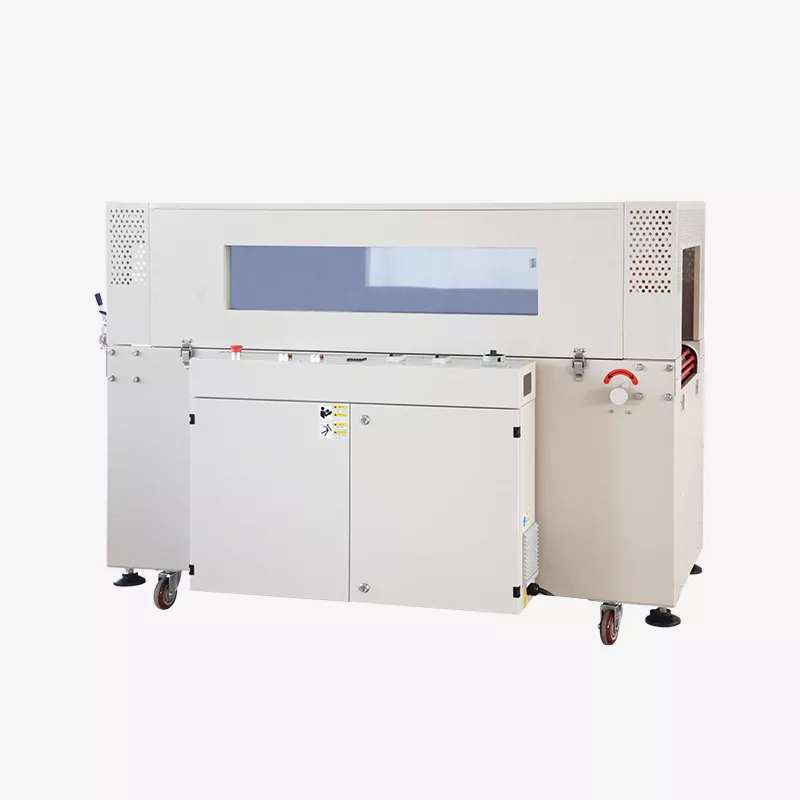
hot air shrink tunnel
A Shrink Wrap Machine has a variety of uses that include product protection from moisture and dust, adding retail appeal and environmental impact reduction.
However, certain problems may arise that can affect the performance and quality of products wrapped.
Some of the problems and their solutions include:
Seals that appear jagged, incomplete or torn is a clear indication that the seal temperatures in use are too low.
It is recommended that the heat be adjusted upwards in increments of 25°F until the seal film attains a clean seal.
Shocks Created By The Shrink Wrap Machine
When Electro-Static Discharge (ESD) occurs, it is a sign that static electricity is present on the machine.
The ESD can also bring about other issues related to film tracking, tension on the film or matted film.
This issue can be fixed by using three-prong plugs to ground the equipment and connecting the frame to a grounding source.
To prevent static and film drag from the polished surfaces, they can be roughened up using some sand paper.
Weak Pinholes or Seals
When tiny brittle seals recurrently appear in open areas and pinholes, it is most likely because the seal temperatures are too high.
Reducing the seal temperatures will prevent the film from crystallizing around the seal area.
Flat Films Unable To Come Off The Roll
This phenomenon is called “blocking” whereby the flat film layers tend to stick together due to extreme storage temperatures.
The film storage temperature must be maintained around the normal room temperature to prevent its layers from fusing.
Damaged Or Curled Products
An extremely aggressive film force or improper tunnel parameters often result in the product being damaged by the film.
To counter this, a reduction in air flow and temperature, increase in conveyor speed or wrapping more film on the package might help.
If these do not work, then a film with lower energy should be considered since its shrink force will be a bit gentle.
Split Seals
This is usually caused by a bad film roll or when the film is too thin or the film have unwanted holes or perforations.
The clamp should be assessed to ensure that it exerts the correct amount of pressure evenly and the sealing wires cleaned.
The Shrink Wrap Machine has the following limitations:
i. The polyolefin used in the Shrink Wrap Machine is a bit expensive as opposed to the PVC film.
Some applications may also require it to be perforated to evade bumpy surfaces and air bubbles.
ii. Some wrap films like Polyethylene are not as clear compared to other films and with a low shrink rate of about 20%.
In terms of Cost, Polyethylene is also costlier than other films.
iii. Extremely high sealing temperatures makes the wrapping film wrinkled and soft.
When the temperatures are too cool, the film wrap becomes brittle and hard.
iv. Many countries are now banning the use of polyvinyl chloride (PVC) films due to their toxic byproducts and chemical composition.
This means that Shrink Wrap Machines in such countries cannot use PVC for wrapping products.
v. Shrink Wrapping using PVC produces strong, toxic odors therefore should be done in well ventilated areas.
Stretch wrap and shrink wrap are mostly mistaken to be the same since they are both made of plastic material.
However, there are major significant variations between these two methods of packaging.
Stretch wraps made from polythene are a stretchable and thin plastic film normally used to seal products in pallets and not the products themselves.
Tension is applied to the stretch wrap as the film gets wrapped around the pallet extending its length by around 800%.
A constrictive force is created around the product by the tension making the product to very stably hold in its place.
Stretch wraps have many varieties like hand stretch and machine stretch which has cast stretch, blown stretch and pre-stretched films.
On the other hand, Shrink Wraps are plastic films that are used in packaging the actual product such as toys and frozen foods.
A protective wrap that is tight is created around the product being packaged when the plastic shrink after heat is applied to it.
Shrink Wraps have two collective types that are polyethylene which is thick but with a lower clarity making it durable.
The other is polyolefin which is versatile, has great clarity and is highly durable making it suitable for freezer applications.
Many shrink materials are prone to static hence static build up is a major contributor of many Shrink Wrapping issues.
To find out if the machine has any form of static-cling, a piece of shrink film is held an inch or so above the machine.
If the shrink film piece is attracted to the machine, then some grounding is required to eliminate this static.
To reduce this type of issue, then a separator can be added to the folded film or static strings and eliminators if they were not pre-installed.
Another method of eliminating static is to use sand paper with a light grit to lightly scrub shiny surfaces.
Only the surfaces that the film drag surfaces (where the shrink film glides over) and any other static-causing spot are to be roughed up.
Some common problems displayed by shrink wraps include:
Shrink Film Tears
Usually caused by thickness or type of shrink film used and this heat shrink problem is fixed by changing the type of film used.
Dog Ears
These triangular projections on the corners are caused by the filming not shrinking sufficiently and is avoided by applying more heat.
Fish Eyes
They are oval or round patterns on the film surface due to poor air velocity or lack of heat and is avoided by proper maintenance of heating element.
Burn Holes
They are as a result of too much heat applied on the film and can be avoided by exposing the film to the correct temperature when sealing.
You may also like to learn about overwrapping machine, flow wrapping machine or packaging and labeling machine.
For any questions or inquiry about shrink wrap machines, contact us now.



